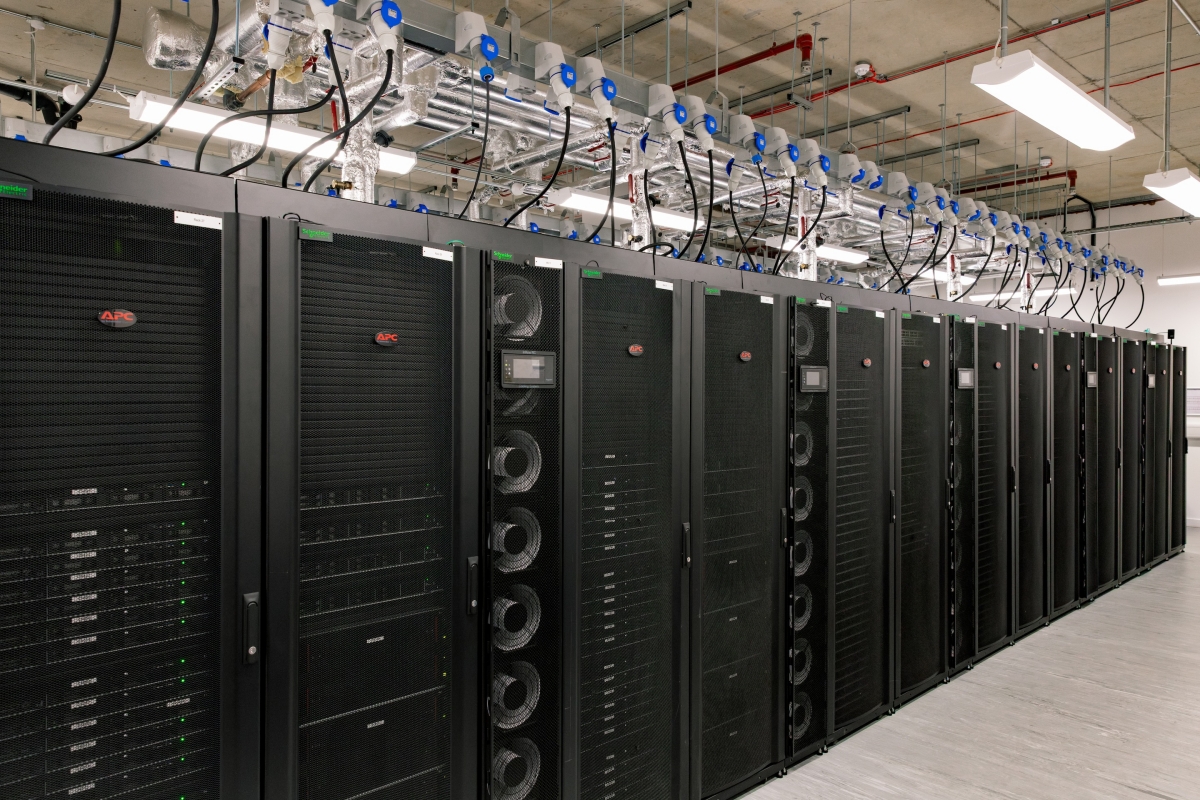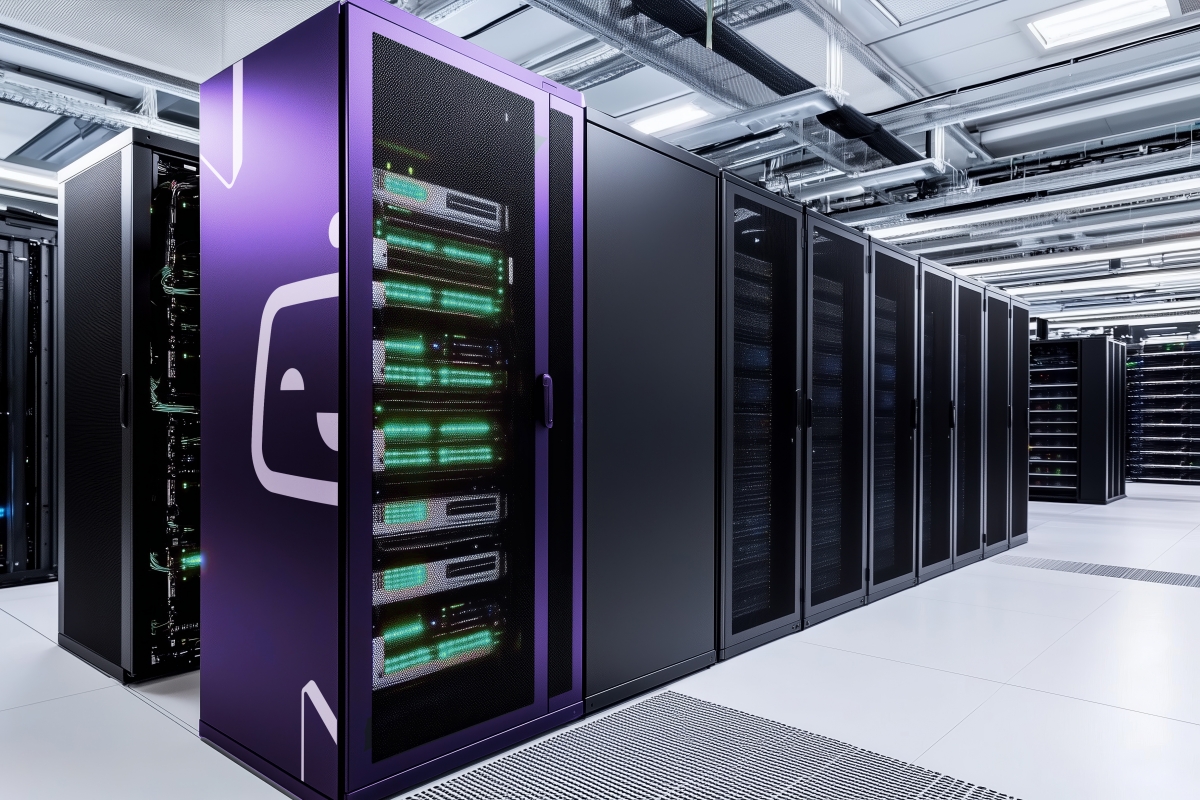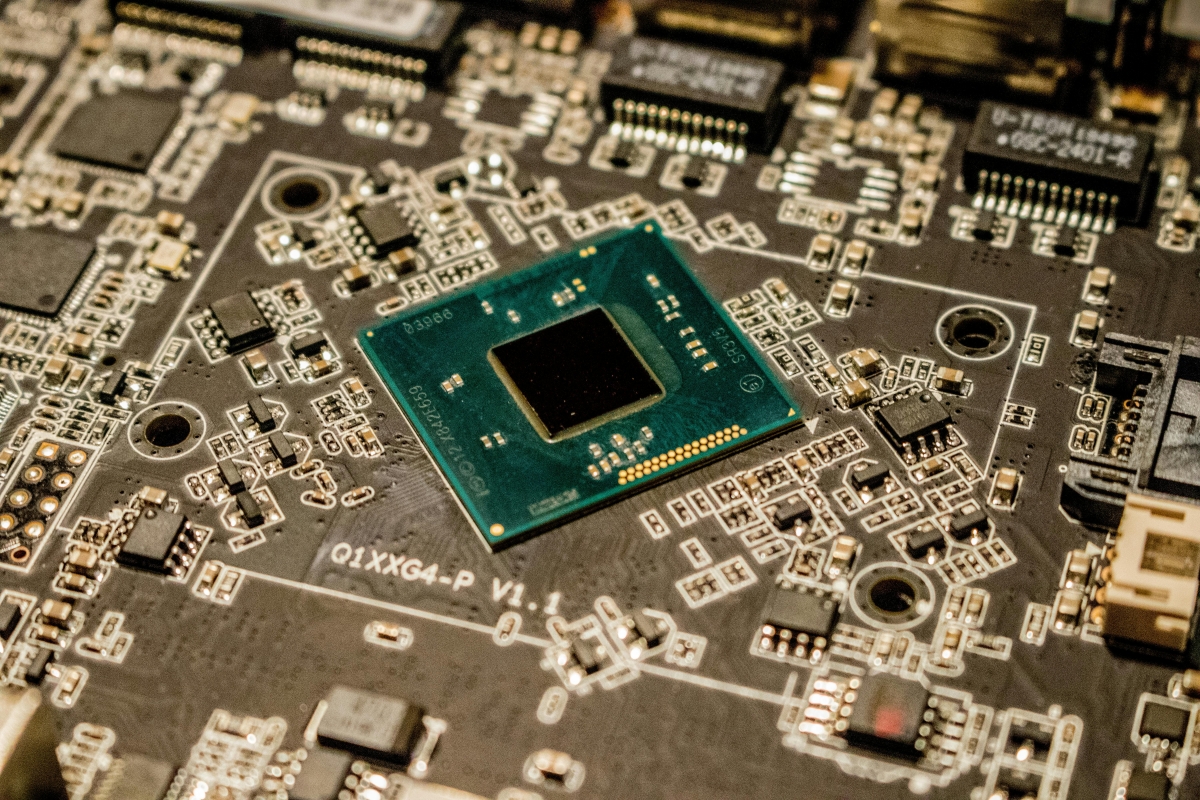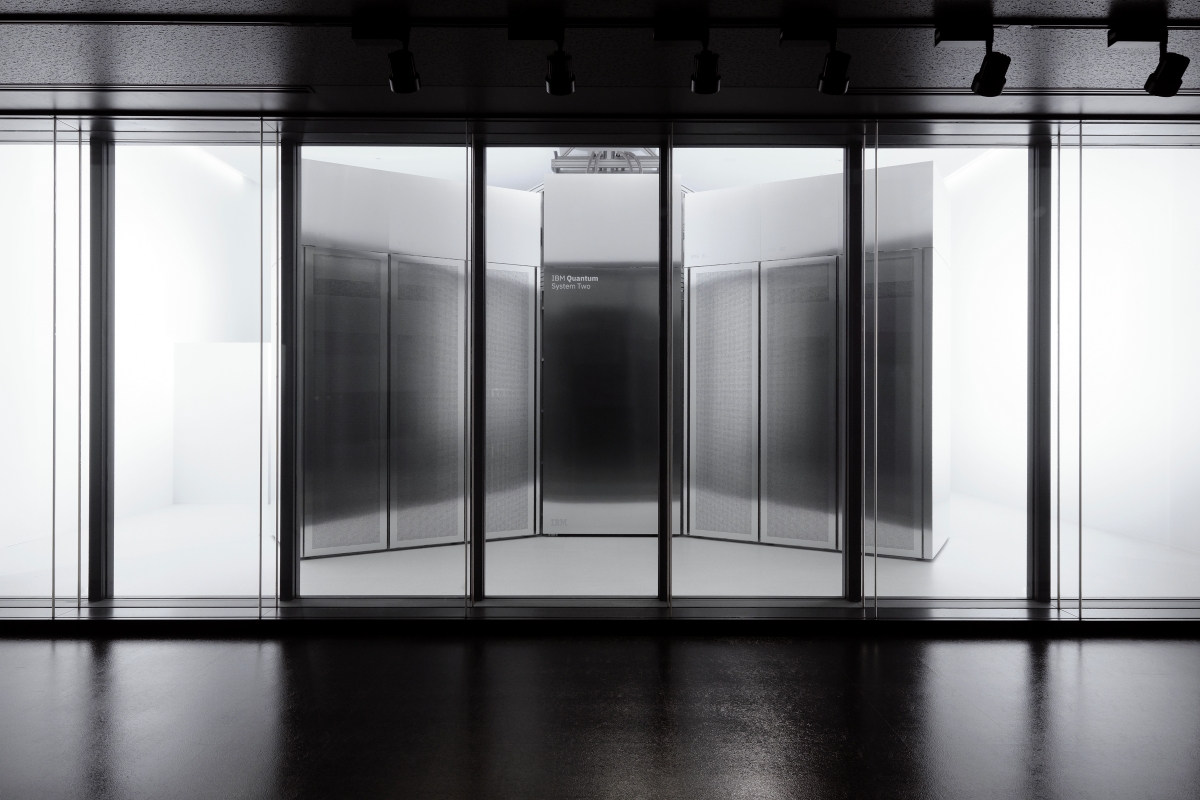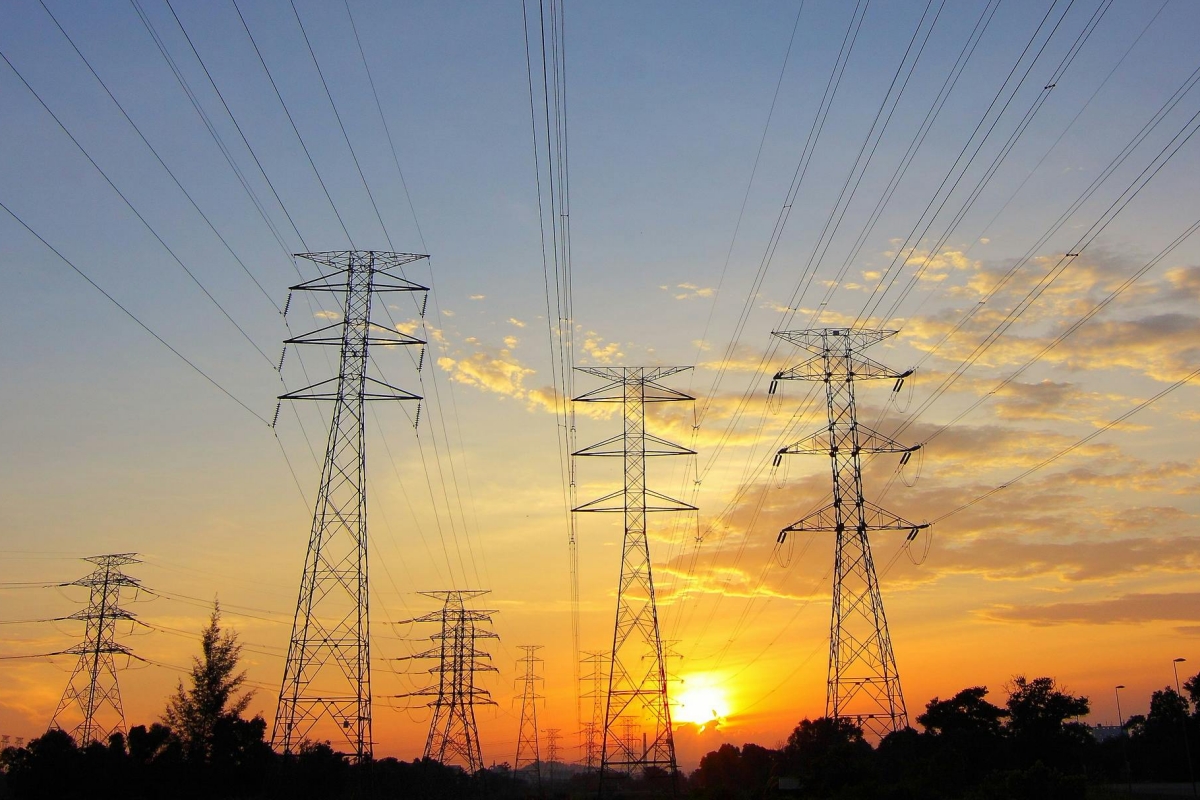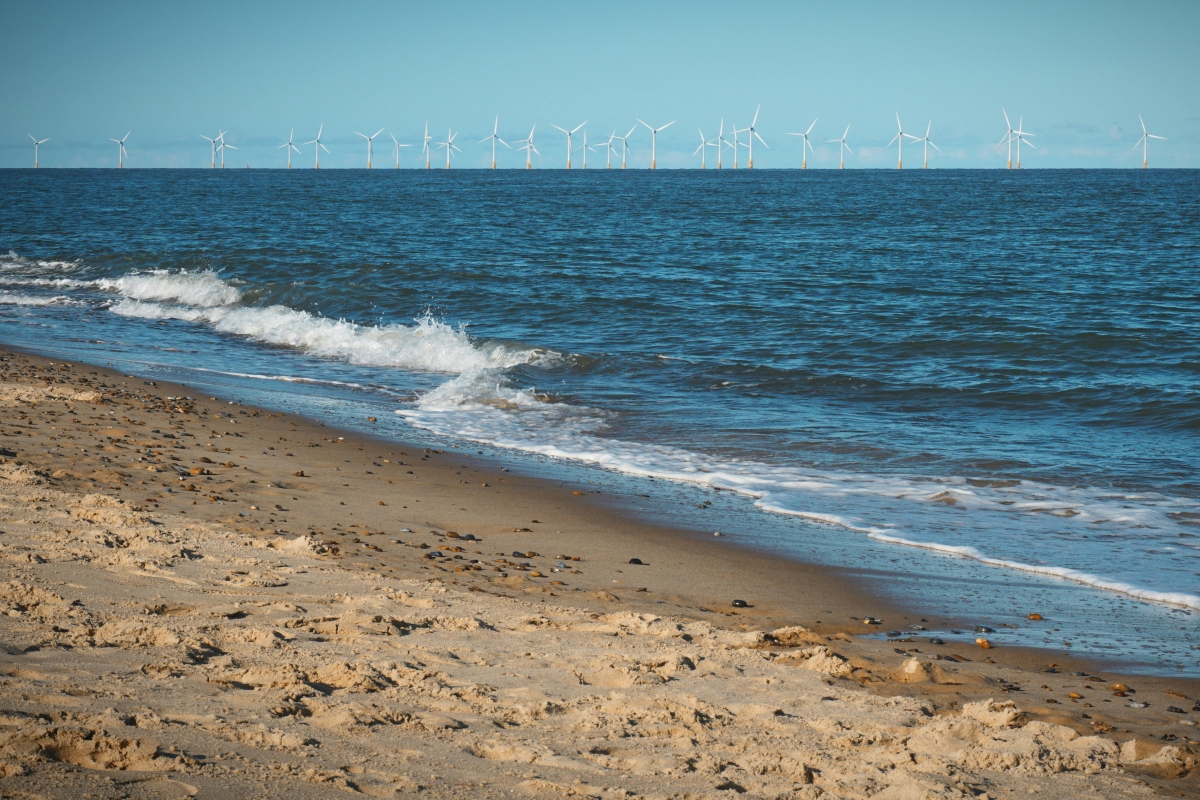Data Centre Build News & Insights
Data Centre Build News & Insights
Data Centres
Sustainable Infrastructure: Building Resilient, Low-Carbon Projects
Data centre district heating project delivered at QMUL
Schneider Electric, a player in energy management and automation, and its EcoXpert Partner, Advanced Power Technology (APT), have delivered a data centre modernisation project at the Queen Mary University of London (QMUL).
Together, the companies have created a platform for heat recovery at the University’s data centre, enabling waste heat from the facility to be connected to a campus-wide district heating network, providing heating and hot water for the buildings and student accommodation nearby.
The project both reduces the campus' scope one CO2 emissions - in line with Queen Mary’s sustainability goals - and has also allowed it to reduce the costs of its energy bills. Furthermore, the new energy-efficient data centre has provided the university with increased resiliency and processing power for its on-premises, large-scale research and intensive computing applications, helping it to provision for future expansion.
Queen Mary University of London is ranked 94th in the world in the 2025-26 edition of the US News and World Report Best Global Universities rankings, and today has over 32,000 students from more than 170 nationalities and 5,700 staff - with nine Nobel Prize winners among its former staff and students.
It says it is committed to conducting "world-leading research" and adheres to the principles of sustainable development across all areas of its operational and academic activities. Its vision is to create and oversee the evolution of a large-scale distributed computing infrastructure needed to maintain the UK’s position as a world leader in particle physics.
As such, the university is a participant in the Grid for Particle Physics (GridPP) project, a collaborative effort among particle physicists, computer scientists, and engineers to analyse data generated by high-energy physics experiments, such as those conducted at the world-famous Large Hadron Collider (LHC) at CERN in Switzerland.
The size, scale, and importance of this work means that the university must operate and maintain a highly-efficient, on-premises data centre - ensuring it meets the technical requirements of existing and future research developments, especially those requiring High Throughput Computing (HTC) applications.
Prior to the modernisation project, Queen Mary’s data centre was experiencing reliability, scalability, and availability issues which required manual, on-site interventions to fix. It was also becoming outdated and its operations were, at times, impacted due to a build-up of heat in its server racks from its inefficient cooling systems.
Future research computing may also have been hindered due to the data centre’s hosting limitations. The refresh was, therefore, vital to improve and stabilise day-to-day operations. In addition, its proximity to the campus’ district heating network presented an opportunity for a new solution be designed and implemented to bring the data centre in line with the university’s sustainability goals.
Schneider Electric’s data centre, power, and cooling solutions were already installed across Queen Mary’s estate, so when it came to the plans to upgrade its operations, the university directly sought help from Schneider Electric’s partner ecosystem.
Schneider Electric’s long-standing EcoXpert Partners, Advanced Power Technology (APT), an independent supplier of critical power and cooling systems, was selected to help Queen Mary meet its modernisation and sustainability goals.
Key to the strategy was the integration of components including Schneider Electric’s EcoStruxure Row Data Centre system. It also incorporated APC NetShelter Racks, APC NetBotz environmental monitoring equipment, InRow cooling, and EcoStruxure Data Centre Expert software.
The new configuration provided by APT, according to Schneider Electric, delivered a more energy-efficient cooling solution and enabled the heat recovery to support the university’s sustainability strategy – allowing Queen Mary to transfer waste heat and reuse it directly for heating and hot water across various buildings, including student accommodation, via a district heating system.
Professor Jonathan Hays, Queen Mary University of London, comments, “The support we've had from APT and Schneider Electric has been unparalleled. Both companies came together to help us develop an exciting and innovative project which would enable us to provision for the future. The biggest impact is that we were able to deliver on what we promised while improving our sustainability. The new data centre is more reliable and efficient than ever and, through the heat recovery, we have significantly reduced our spending on heating and hot water while gaining enhanced reputational benefits from taking a lead on sustainability within our data centre operations.”
“The project at Queen Mary demonstrates how digital infrastructure can be a catalyst for net zero, allowing today’s organisations to benefit from the power of advanced computing,” adds Mark Yeeles, Vice President, Secure Power division, Schneider Electric UK & Ireland. “By combining innovative engineering with sustainable data centre solutions, the university has developed an enhanced infrastructure platform that will meet its research computing requirements while supporting its sustainability strategy.”
“Schneider Electric’s EcoStruxure Data Centre solutions were essential to help Queen Mary bring together its power, cooling, racks, and management systems, and support the deployment of its high-density IT equipment needed for its research,” claims John Andrew, Technical Sales Manager, APT. “This approach also created a platform to support its sustainability objectives via heat reuse, while enabling the University to act proactively and preventatively to intercept and remediate potential future issues.”
For more from Schneider Electric, click here.
Joe Peck - 30 June 2025
Data Centre Build News & Insights
Data Centres
News
Bitrise first mobile DevOps platform to launch data centre in EU
Bitrise, a mobile DevOps platform, today announced plans to launch a data centre in the Netherlands in a response to increased demand for data residency in the European Union (EU).
The new data centre will be the first in the EU operated by a DevOps platform, aiming to provide businesses with a fully-hosted and managed solution to meet the stringent data security and compliance requirements of the region. Bitrise will invest $3 million (£2.2 million) in the project, supporting the anticipated 22% year-on-year growth in European data centre capacity in 2025 as the continent focuses on operational resilience and data sovereignty.
“In an era of geopolitical volatility and increasing regulatory complexity, mobile innovation in Europe demands sovereignty, speed, and security,” announces Barnabás Birmacher, CEO and Co-founder of Bitrise. “By launching the first EU-hosted DevOps platform, Bitrise is giving customers total control over their data, ensuring compliance and empowering them to scale development faster and more securely.”
This investment in an Amsterdam-based data centre marks a step forwards in enhancing support for EU customers. By replicating the data centre model used in the US, Bitrise intends to deploy the same high-performance Apple M4 and Linux-based infrastructure in Europe, allowing businesses to choose their data residency and meet risk and compliance requirements.
This expansion is a direct response to the growing demand from EU-based companies and global brands operating in the region. By strengthening data security and sovereignty, customers should have access to the tools they need to scale development securely and stay competitive in a rapidly changing market.
“With data sovereignty becoming a critical priority for European businesses, Bitrise’s move to launch an EU-based data centre couldn’t be more timely," comments Reza Malekzadeh, General Partner at Partech and Bitrise board member. "Bitrise is setting a new standard for DevOps in Europe by giving companies the ability to meet stringent regulatory requirements without compromising on speed or innovation.”
Recent regulatory changes and international data transfer challenges have created a complex environment for companies operating across borders. The data centre market in Europe is estimated to grow by $291.7 billion (£214.3 billion) from 2024 to 2028, driven by demand for local data processing and storage solutions. European companies in security-sensitive and regulated industries often rely on cloud providers in the US or spend millions to build their own local infrastructure. This has created a major gap in the market for compliant, hosted solutions.
“We recognise the critical need for sovereign hosting solutions for mobile CI/CD infrastructure in the EU,” Barnabás says. “This move not only strengthens our presence in Europe, but underscores our commitment to solving the complex challenges our partners face, allowing them to innovate and scale without compromise.”
Bitrise’s Amsterdam data centre will, according to the company, emulate Bitrise’s existing infrastructure model, providing:• Access to the fastest Apple Silicon and Linux machines for iOS and Android.• Advanced physical and network security measures.• Full compliance with EU data protection standards.• High-speed connectivity to ensure rapid build times.
The data centre will support all Bitrise products and services, aiming to allow customers to build, test, and automate their applications without source code ever leaving the EU. In contrast to the majority of DevOps providers with US-only hosting capabilities, Bitrise’s expansion, the company claims, creates a DevOps platform that caters to data residency and digital operational resilience requirements.
“By filling this gap in the market, we’re addressing a critical need for businesses throughout the EU,” Barnabás continues. “Our ability to quickly deploy and scale infrastructure based on our successful US model allows us to move fast and establish a strong presence in this underserved market.”
Joe Peck - 26 June 2025
Data Centre Build News & Insights
Data Centres
Exploring Modern Data Centre Design
InfraPartners launches Advanced Research and Engineering
InfraPartners, a designer and builder of prefabricated AI data centres, today announced the launch of a new research function, InfraPartners Advanced Research and Engineering. Led by recent hire Bal Aujla, previously the Global Head of Innovation Labs at BlackRock, InfraPartners has assembled a team of experts based in Europe and the US to act as a resource for AI innovation in the data centre industry. The function seeks to foster industry collaboration to provide forward-looking insights and thought leadership.
AI demand is driving a surge in new global data centre builds, which are projected to triple by 2030. AI-specific infrastructure is expected to drive approximately 70% of this growth. Additionally, regulation, regionalisation, and geopolitical shifts are reshaping infrastructure needs. As a result, operators are looking at new ways to meet these changes with solutions that deliver scale, schedule certainty, and accelerated time-to-value while improving sustainability and avoiding technology obsolescence.
InfraPartners Advanced Research and Engineering intends to accelerate data centre innovation by identifying and focusing on the biggest opportunities and challenges of this next wave of AI-driven growth. With plans for Gigawatts (GWs) of data centre builds globally and projected investments reaching nearly $7 trillion (£5.15 trillion), the impact of new innovation will be significant.
Through partnerships with industry experts, regulators, and disruptive newcomers, the InfraPartners Advanced Research and Engineering team aims to foster a community where ideas and research can be shared to grow data centre knowledge, capabilities, and opportunities. These efforts will aim to advance the digital infrastructure sector as a whole.
“At InfraPartners, our new research function represents the deliberate convergence of expertise from across the AI and data centre ecosystem. We’re bringing together professionals with diverse perspectives and backgrounds in artificial intelligence, data centre architecture, power infrastructure, and capital allocation to address the evolving needs of AI and the significant value it can bring to the world,” says Bal Aujla, Director, Head of Advanced Research and Engineering at InfraPartners. “This integrated team approach enables us to look at opportunities and challenges from end-to-end and across every layer of the stack. We’re no longer approaching digital infrastructure as a siloed engineering challenge. Instead, the new team will focus on the initiatives that have the most impact on transforming data centre architecture and creating business value.”
InfraPartners Advanced Research and Engineering says it has developed a new design philosophy that prioritises flexibility, upgradeability, and rapid refresh cycles. Called the 'Upgradeable Data Center,' this design, it claims, future-proofs data centre investments and enables greater resilience and sustainability in a fast-changing digital landscape.
“The Upgradeable Data Center reflects the fact data centres must now be built to evolve. In a world where GPU generations shift every 12–18 months and designs change significantly each time, it is no longer viable to build static infrastructure which has decades-long refresh cycles. Our design approach enables operators to deploy the latest GPUs and upgrade data centre infrastructure in a seamless way,” notes Harqs Singh, Chief Technology Officer at InfraPartners.
In its first white paper, Data Centers Transforming at the pace of Technology change, the team explores the rapid growth of AI workloads and its impact on digital infrastructure, including the GPU technology roadmap, increasing rack densities, and the implications for the modern data centre. It highlights the economic risks and commercial opportunities emerging from these trends and introduces how the Upgradeable Data Center is seeking to enable new data centres to transform at the pace of technology change.
InfraPartners' model is to build 80% of the data centre offsite and 20% onsite, helping address key industry challenges like skilled labour shortages and power constraints, whilst aligning infrastructure investment with business agility and long-term growth.
Joe Peck - 25 June 2025
Data Centre Build News & Insights
News
Quantum Computing: Infrastructure Builds, Deployment & Innovation
IBM, RIKEN unveil first Quantum System Two outside of the US
IBM, an American multinational technology corporation, and RIKEN, a national research laboratory in Japan, have unveiled the first IBM Quantum System Two ever to be deployed outside of the United States and beyond an IBM quantum data centre. The availability of this system also marks a milestone as the first quantum computer to be co-located with RIKEN's supercomputer, Fugaku — one of the most powerful classical systems on Earth. This effort is supported by the New Energy and Industrial Technology Development Organisation (NEDO), an organisation under the jurisdiction of Japan's Ministry of Economy, Trade, and Industry (METI)'s 'Development of Integrated Utilisation Technology for Quantum and Supercomputers' as part of the 'Project for Research and Development of Enhanced Infrastructures for Post 5G Information and Communications Systems.'
IBM Quantum System Two at RIKEN is powered by IBM's 156-qubit IBM Quantum Heron, one of the company's quantum processors. IBM Heron's quality as measured by the two-qubit error rate, across a 100-qubit layered circuit, is 3x10-3 — which, the company claims, is 10 times better than the previous generation 127-qubit IBM Quantum Eagle. IBM Heron's speed, as measured by the CLOPS (circuit layer operations per second) metric, is 250,000, which would reflect another 10 times improvement in the past year over IBM Eagle.
At a scale of 156 qubits, with these quality and speed metrics, Heron is the most performant quantum processor in the world. This latest Heron is capable of running quantum circuits that are beyond brute-force simulations on classical computers, and its connection to Fugaku will enable RIKEN teams to use quantum-centric supercomputing approaches to push forward research on advanced algorithms, such as fundamental chemistry problems.
The new IBM Quantum System Two is co-located with Fugaku within the RIKEN Center for Computational Science (R-CCS), one of Japan's high-performance computing (HPC) centres. The computers are linked through a high-speed network at the fundamental instruction level to form a proving ground for quantum-centric supercomputing. This low-level integration aims to allow RIKEN and IBM engineers to develop parallelised workloads, low-latency classical-quantum communication protocols, and advanced compilation passes and libraries. Because quantum and classical systems will ultimately offer different computational strengths, this hopes to allow each paradigm to perform the parts of an algorithm for which it is best suited.
This new development expands IBM's global fleet of quantum computers and was officially launched during a ribbon-cutting ceremony today (24 June 2025) in Kobe, Japan. The event featured opening remarks from RIKEN President Makoto Gonokami; Jay Gambetta, IBM Fellow and Vice President of IBM Quantum; Akio Yamaguchi, General Manager of IBM Japan; as well as local parliament members and representatives from the Kobe Prefecture and City, METI, NEDO, and MEXT.
"The future of computing is quantum-centric and with our partners at RIKEN we are taking a big step forward to make this vision a reality," claims Jay Gambetta, VP, IBM Quantum. "The new IBM Quantum System Two, powered by our latest Heron processor and connected to Fugaku, will allow scientists and engineers to push the limits of what is possible."
"By combining Fugaku and the IBM Quantum System Two, RIKEN aims to lead Japan into a new era of high-performance computing," says Mitsuhisa Sato, Division Director of the Quantum-HPC Hybrid Platform Division, RIKEN Center for Computational Science. "Our mission is to develop and demonstrate practical quantum-HPC hybrid workflows that can be explored by both the scientific community and industry. The connection of these two systems enables us to take critical steps toward realising this vision."
The installation of IBM Quantum System Two at RIKEN is poised to expand previous efforts by RIKEN and IBM researchers as they seek to discover algorithms that offer quantum advantage: the point at which a quantum computer can solve a problem faster, cheaper, or more accurately than any known classical method. This includes work recently featured on the cover of Science Advances, based on sample-based quantum diagonalisation (SQD) techniques to accurately model the electronic structure of iron sulphides, a compound present widely in nature and organic systems. The ability to realistically model such a complex system is essential for many problems in chemistry, and was historically believed to require fault-tolerant quantum computers. SQD workflows are among the first demonstrations of how the near-term quantum computers of today can provide scientific value when integrated with powerful classical infrastructure.
For more from IBM, click here.
Joe Peck - 24 June 2025
Data Centre Build News & Insights
News
Sustainable Infrastructure: Building Resilient, Low-Carbon Projects
Colt DCS achieves 90% renewable energy procurement
Colt Data Centre Services (Colt DCS), a data centre operator that designs, builds, and operates data centres for global hyperscalers and large enterprises, has published its third sustainability report, highlighting the company's performance over 2024.
Last year, Colt DCS achieved 90% renewable energy procurement across its global estate, representing an 8% increase from the previous year.
The data centre provider also reduced its absolute greenhouse gas emissions (Scopes 1, 2, and 3, market-based) by 32% compared to the 2019 base year, while continuing to expand its global footprint by adding new operational sites in Osaka Keihanna, Japan, and Mumbai, India.
Today, the company operates 13 data centres across Europe and APAC, with an additional 19 facilities in development. 2024 marked the launch of a joint venture for Colt DCS with RMZ Infrastructure in India, increasing the data centre provider’s growth and capacity in high-demand markets.
Individually, Scope 2 (market-based) emissions were reduced to zero through 100% renewable electricity procurement. While Scope 3 emissions, which represent 98% of the company’s total footprint in 2024, fell by 26% compared to the base year.
In addition, Colt DCS under Colt Group maintained a Platinum score in its EcoVadis 2024 submission, marking the third consecutive year the data centre provider has ranked in the top 1% of organisations assessed for their environmental, social, and governance (ESG) performance.
In 2024, the company was awarded the 'Best Colocation Provider Sustainability Innovation of the Year' at the Data Center Solutions (DCS) Awards.
Further sustainability achievements in 2024 include:• 95% of waste diverted from landfill at London North (UK).• 91% of suppliers by emissions have science-based climate targets in place.• Striving to design all new facilities with renewable electricity supply, high energy efficient cooling systems, and - where local infrastructure allows - waste heat recovery.The data centre provider’s long-term climate goal is to achieve a 90% absolute reduction in Scope 1, 2, and 3 emissions from 2019 levels by 2045. Key enablers include maintaining 100% renewable electricity, deploying scalable and sustainable data centres, and minimising embodied carbon in new developments.
• The company launched the DCS Employee Value Proposition (EVP) and introduced the AI-powered “MyLearningHub” to support continuous learning and professional development.• 87% of employees recommend Colt DCS as a great place to work (up from 83% in 2023).
• With increasing threats faced by critical infrastructure, the data centre provider has prioritised security, achieving ISO 27001 and SOC 2 Type II certifications.• Colt DCS introduced a dedicated Risk Policy & Procedure, identifying and assessing sustainability risk using its Climate Change Risk Register, country-specific or function-specific risk registers, and the ESG risk register.• In 2024, the company also developed bottom-up risk registers across support functions and operations.
“For Colt DCS, 2024 was a year of significant growth. When we started our hyperscale journey nine years ago, the cloud market was $111 billion. Today, it is over $760 billion and is projected to grow even further due to the rising demand in streaming, cloud, and artificial intelligence tools and services,” comments Niclas Sanfridsson, CEO of Colt DCS. “I’m especially proud that we were able to help our customers scale and accelerate during this time of transformation by staying true to our core values: trust, respect, unite, sustain, and trailblaze”.
The data centre provider says it remains committed to its net zero by 2045 ambition, with a focus on innovation, collaboration, and responsible growth. The company will continue to update its Global Reference Design and sustainability roadmap in line with best practices and regulatory requirements.
For more from Colt DCS, click here.
Joe Peck - 24 June 2025
Data Centre Architecture Insights & Best Practices
Data Centre Build News & Insights
Data Centres
Equinix responds to new research by think-tank Ember
Think-tank Ember has published new research warning that poor electricity grid planning could cause a major shift in Europe’s data centre landscape, particularly as developers increasingly seek locations with faster and easier grid connections rather than traditional hubs like Frankfurt, London, Amsterdam, and Paris.
Data centres are a key part of critical infrastructure. In 2024, techUK published a report highlighting the essential role they play in enabling digital transformation across all sectors of the economy. As well as contributing £4.7 billion in gross added value (GVA) to the UK economy and 43,500 jobs, they are the backbone of our digital world. Data centres play a role in everything from delivering our favourite TV shows to ensuring we have access to banking, education, and healthcare.
The opportunity AI has unlocked demands further data centre capacity which, in turn, requires energy. Equinix, an American multinational data centre and colocation company operating interconnection and data centre facilities worldwide, says it is responding to this need by investing in and expanding its campuses. The energy grid is evidently an important consideration in that process, with some campuses located in areas where both land and energy infrastructure are readily available. Other sites are built in areas where temporary energy solutions are needed while grid access is extended.
In markets like the UK, the Government is making significant investment in the grid through programs like the RIIO-T3 Business Plan, which commits £35 billion to up-level the UK’s energy transmission system over the next 5 years, doubling the amount of transferable power by 2029 - creating great optimism.
Equinix claims it has made significant investments in its energy programs. Examples include renewable energy adoption and the global Equinix Heat Export program, which intends to contribute heat and energy to communities that surround its campus locations. By adopting cleaner energy alternatives and innovative technologies, the company says it limits its reliance on the grid in some countries as well as reducing emissions globally.
Its power purchase agreements (PPAs) are long-term wind and solar agreements where it partners directly with producers, helping to fund the development of projects like new wind and solar farms, increasing the amount of renewable energy available to the grid while supporting the long-term goal of reaching net zero by 2040. Globally, the Equinix Heat Export program takes waste heat from its data centres and, in partnership with energy utilities, distributes this heat to surrounding communities. In Helsinki, this program provides heat for local homes and, in Paris, heat is delivered to the Plaine Saulneir urban development zone which, alongside local houses, is home to the Olympic swimming pool.
The energy grid is critical for supporting data centre infrastructure, and it’s certainly exciting to see innovation coming from both energy utilities and data centre operators. A collaboration between the two is crucial for unlocking opportunities for businesses, enriching the services they can offer to consumers, and achieving climate goals.
For more from Equinix, click here.
Joe Peck - 20 June 2025
Data Centre Business News and Industry Trends
News
Renewables and Energy: Infrastructure Builds Driving Sustainable Power
Clean Energy Capital rebrands to Xela Energy
Clean Energy Capital (CEC) has rebranded as Xela Energy – marking an evolution from a start-up renewables developer to a fully-funded, institutional energy business delivering long-term infrastructure at scale.
The company says its rebrand reflects its "maturity as a company," from a start-up, seed-stage renewable energy developer to an established enterprise energy business that builds, owns, and operates private wire infrastructure for global businesses, including data centres, industrial manufacturing, pharmaceutical, and blue-chip technology organisations.
The company now provides its customers with access to renewable power, alongside the pre-requisite experience in building and owning renewable energy assets, including construction management, asset management, operations, H&S, regulatory and commercial compliance, contract management, billing, and customer service.
Alexander Goodall, Founder & CEO at Xela Energy, comments, “Our rebrand to Xela Energy reflects the business we’ve become — and one we continue to build upon. It’s not just about a new name, it’s about delivering real infrastructure to solve our customers’ challenges proactively, not reactively. From a four-person start-up to a team of more than 25 dedicated industry experts, it’s our people who make that possible. Their belief, drive, and commitment have shaped Xela from the very start, and they continue to push us forwards every day. Xela Energy has grown from origins in development to delivering large-scale renewable energy solutions for some of the UK’s largest power users.
“With capital secured and land in strategic locations, Xela Energy brings shovel-ready, strategically located projects to the table [...] and is positioned to power a more sustainable, industrial economy. As we enter this new phase, we’re creating an organisation that is forward-looking, technology-agnostic, and ready to scale. At the heart of this rebrand is a simple belief: if our energy is unsustainable, so is our existence.”
The company claims that, due to a turbulent macroeconomic environment, UK commercial and industrial energy users can no longer rely on the grid to consistently deliver affordable or green energy, with Britain paying some of the highest prices of any country in the world for electricity, forcing businesses to seek off-grid solutions.
Xela Energy says it responds to this demand by delivering renewable infrastructure located where power is needed, making renewable power an "undeniable part" of the answer to these industry-wide challenges. The company seeks to offer large-scale energy users access to clean, reliable, and cost-effective power, allowing them to reduce emissions, lower costs, and eliminate up-front capex.
It continues by suggesting that central to this approach are Xela Energy’s Renewable Energy Service Agreements (RESAs): a private wire equivalent to a traditional power purchase agreement (PPA). RESAs, the company claims, enable Xela Energy customers to fix pricing, shielding them from future energy price spikes at scale and delivering industrial-scale green power directly to a site via private wire. These renewable energy projects are funded and built off-balance-sheet with the intention to help preserve customer capital for core growth activities directly into the customers infrastructure.
Joe Peck - 19 June 2025
Data Centres
Innovations in Data Center Power and Cooling Solutions
News
Sustainable Infrastructure: Building Resilient, Low-Carbon Projects
New energy agreement for nLighten’s UK data centres
nLighten, a provider of sustainable edge data centre services operating across the UK, Germany, France, and the Netherlands, has entered into a new renewable energy supply agreement with UK-based provider Conrad Energy, covering all of nLighten’s edge data centre locations across the UK. Unlike traditional supply contracts, the agreement enables nLighten to monitor its renewable energy consumption with granularity – down to the asset level and on an hourly basis.
The partnership, which initially started in April 2024 with the delivery of renewable power, was enhanced in January 2025 with the introduction of detailed tracking and reporting capabilities. Previously, nLighten’s UK energy procurement was based on market-driven purchases supplemented by annual Guarantees of Origin.
Conrad Energy has progressively onboarded all nLighten UK meters, consolidating what was previously a fragmented energy procurement approach. Each month, nLighten receives a breakdown of its renewable energy supply from Conrad Energy. This includes asset-level insights into the share of wind, solar, and biomass sources contributing to the energy mix. The data allows nLighten to track its renewable coverage over time and calculate avoided CO₂ emissions based on the actual generation profile.
“This collaboration goes beyond what most energy suppliers currently offer in the UK,” claims Francesco Marasco, VP of Energy Operations & Sustainability at nLighten. “Not only can we align our procurement with real-time pricing, but we now also have full transparency over how – and where – our renewable energy is being generated. It’s another step towards building the most sustainable edge data centre platform in Europe.”
This model builds on learnings from a similar agreement nLighten established in Spain with Shell. However, the Conrad Energy agreement takes transparency a step further by providing visibility down to individual generation assets, not just the source.
“We’re proud to support nLighten’s efforts to lead the way in data centre sustainability,” says Tim Foster, Director of Energy for Business at Conrad Energy. “By combining flexible supply structures with granular data visibility, we’re helping digital infrastructure operators align more closely with today’s energy realities and decarbonisation goals.”
For more from nLighten, click here.
Joe Peck - 19 June 2025
Data Centre Build News & Insights
News
Renewables and Energy: Infrastructure Builds Driving Sustainable Power
'EU’s shift on climate targets echoes industry reality'
According to a report from Aggreko, a British multinational temporary power generation and temperature control company, the European Union’s move to consider more flexible climate targets reflects a broader shift already underway, as highlighted in earlier research showing businesses adjusting net zero plans in response to rising energy costs.
According to EU diplomats, the European Commission is set to propose a new bloc-wide climate target to cut net greenhouse gas emissions by 90% from 1990 levels, while allowing flexibility for domestic industries and use of international carbon credits. This shift mirrors recent findings from Aggreko’s surveying of CEOs across Europe, which revealed that high energy costs are prompting many businesses to reassess their decarbonisation timelines to ensure a commercially viable transition.
The company’s recent report, Rebalancing the Energy Transition, based on a survey of 400 CEOs across the UK, Germany, France, and Italy, found that 95% of large businesses have already adjusted their net zero strategies in response to energy supply and pricing pressures. These findings suggest the EU’s proposed shift reflects what is already happening on the ground in energy-intensive sectors subject to rising costs and grid issues.
“The EU’s shift towards more flexible climate targets recognises the need for practical pathways to net zero that we’re seeing across industry,” says Robert Wells, Aggreko’s Europe President. “Our research shows that while the intention to invest in the energy transition remains strong, companies are evolving their strategies to ensure operational resilience while also driving environmental progress.”
According to Aggreko’s research, while 12% of CEOs currently rank the speed of decarbonisation as their top priority, the vast majority remain committed to climate action. Approximately 80% plan to increase investment in energy transition initiatives over the next year, demonstrating that businesses are still committed to sustainable practices, even as they navigate cost and competitiveness challenges.
With this in mind, Aggreko is urging businesses to look beyond timelines and focus on practical, scalable solutions that can reduce emissions while improving energy resilience. Central to this is the role of decentralised energy systems and supply chain collaboration, which Rebalancing the Energy Transition identifies as key to reducing energy costs and accelerating progress toward net zero.
“In a volatile energy market, decentralised and flexible power solutions have moved from optional to essential,” Robert adds. “By working with supply chain partners to deploy renewable technologies and alternative power agreements, businesses can reduce emissions and costs simultaneously.”
Aggreko’s sustainability framework, Energising Change, aims to support this approach by helping sectors such as manufacturing, construction, data centres, utilities, and petrochemicals to implement decentralised energy solutions that are both commercially and environmentally sustainable.
Robert concludes, “The EU’s evolving stance is a recognition of the complex and multifaceted priorities businesses face. Our report provides a roadmap for navigating these challenges, showing that with the right strategies, it is possible to stay competitive and committed to climate goals. I would encourage all stakeholders involved in energy equipment procurement to seek it out and read it.”
For more from Aggreko, click here.
Joe Peck - 17 June 2025
Data Centre Build News & Insights
Data Centres
News
Renewables and Energy: Infrastructure Builds Driving Sustainable Power
Sustainable Infrastructure: Building Resilient, Low-Carbon Projects
ST Telemedia achieves 78% renewable energy usage
ST Telemedia Global Data Centres (STT GDC), a data centre service provider headquartered in Singapore, today published its 2024 Environmental, Social, and Governance (ESG) report. The report details STT's progress towards its ESG targets, as well as its three main ESG pillars: carbon-neutral data centre operations by 2030; a safe, secure, diverse and inclusive workplace; and ethical and responsible business.
With the growing demand for digital infrastructure, sustainability has become a critical priority for organisations worldwide. Bruno Lopez, President and Group Chief Executive Officer, ST Telemedia Global Data Centres, says, “As the digital economy accelerates, our responsibility as infrastructure providers extends beyond simply supporting growth—we must lead with purpose and innovation. In 2024, STT GDC made remarkable progress on our sustainability journey, from securing S$500 million in sustainability-linked financing to implementing initiatives such as AI-driven cooling optimisation and pioneering the use of hydrotreated vegetable oil in Singapore. These achievements reflect our unwavering commitment to achieving carbon neutrality by 2030 while delivering the resilient, efficient infrastructure that powers our digital world. Sustainability is not just a corporate objective for us—it is the foundation upon which we are building the future of digital infrastructure.”
Some highlights of the 2024 ESG report include:
• Achieved 78.5% renewable energy usage.
• Achieved a 22.9% year-on-year reduction in carbon emissions across the group.
• Issued S$500 million of Sustainability- Linked Perpetual (SLP) securities.
• Enhanced Sustainability-Linked Financing Framework — setting further targets, including increasing the use of renewable energy to 85% by 2028 and achieving a 70% reduction in carbon intensity from a 2021 baseline by 2028.
• First data centre operator in Singapore to deploy HVO for backup generators.
• First data centre operator in Asia to pilot AI-based autonomous control system for optimising data centre cooling in STT GDC’s facilities in Singapore.
• Achieved a 66.2% reduction in carbon intensity from the 2021 baseline.
• Improved power usage effectiveness (PUE) by 11.2% from the 2020 baseline.
• Realised a 34.5% improvement in water usage effectiveness (WUE) from the 2020 baseline.
• Achieved zero work-related serious injuries or fatalities since 2020, with a Total Recordable Incident Rate (TRIR) of 0.1 earned across more than 25 million hours worked in its construction and operations program.
• Invested an average of 23.5 training hours per employee in the growth and development of its workforce.
• In 2024, its team at STT GDC Indonesia partnered with a local conservation enabler to plant 1,000 mangrove trees at Dusun Tangkolak, Karawang, West Java.
• 100% of employees have received anti-corruption training, with zero incidents of corruption.
STT GDC's ESG Report is based on a full year’s data from 1 January to 31 December 2024, focusing primarily on STT GDC’s operating entities (data centres and offices) during the year.
For more from ST Telemedia, click here.
Joe Peck - 16 June 2025

Head office & Accounts:
Suite 14, 6-8 Revenge Road, Lordswood
Kent ME5 8UD
T: +44 (0)1634 673163
F: +44 (0)1634 673173
